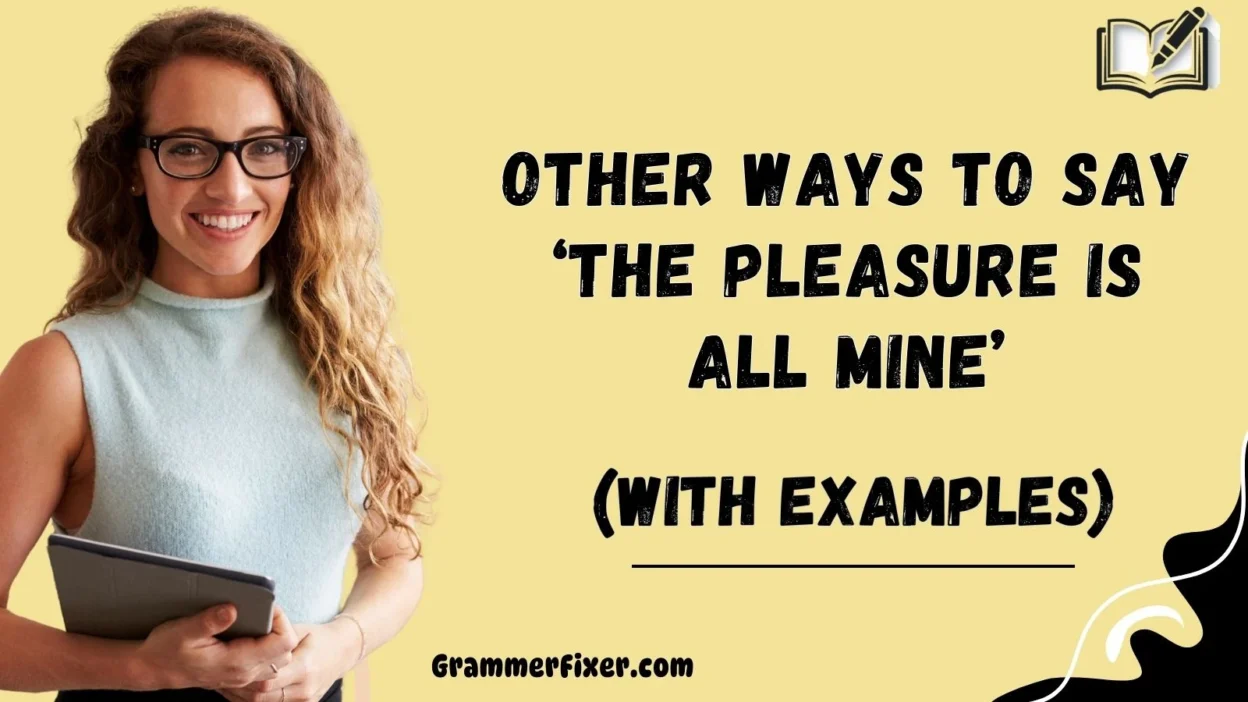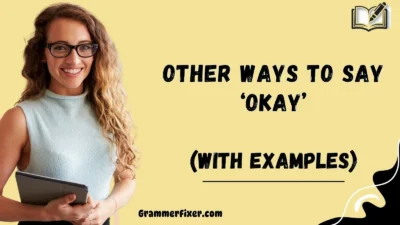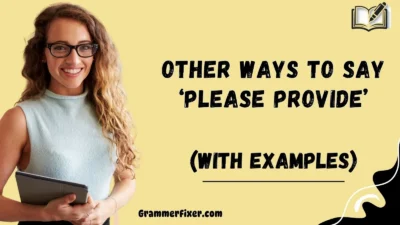Finding the right words to show warmth, gratitude, and sincerity can make a lasting impact on your relationships—whether in professional settings or personal conversations. Saying “The pleasure is all mine” is a classic, polite, and respectful expression, but sometimes you might want alternatives that feel more personal, empathetic, and fitting to the context.
This guide will walk you through 30 thoughtful ways to express the same sentiment with examples, tone, and best uses—so you can choose the right phrase for emails, meetings, casual chats, and professional notes.
What Does “The Pleasure Is All Mine” Mean?
“The pleasure is all mine” is a polite and gracious response often used when someone expresses thanks or appreciation. At its core, the phrase means that you feel grateful for the interaction and that the *honor, joy, or benefit truly belongs to you, not just the other person.
It reflects humility, courtesy, and genuine respect, making it a timeless and professional expression. By saying it, you acknowledge the value of the relationship or interaction while downplaying any burden or effort on your part, leaving the exchange with a tone of warmth, kindness, and mutual appreciation.
When to Use “The Pleasure Is All Mine”?
You can use this phrase in situations such as:
- After a meeting or discussion where someone thanks you.
- When clients, colleagues, or superiors express gratitude.
- During social interactions where you want to show courtesy and humility.
Is It Professional/Polite to Say “The Pleasure Is All Mine”?
Yes. It is considered professional, timeless, and universally polite. However, in some contexts it may sound a little formal or old-fashioned, so choosing a fresh alternative can help you sound more authentic and natural.
Pros or Cons
Pros:
- Shows humility and politeness
- Works in professional emails and business settings
- Conveys gratitude and courtesy
Cons:
- May feel overused or stiff in casual settings
- Sometimes interpreted as too formal or insincere if repeated often
1. It’s My Pleasure
Meaning: A straightforward way to show appreciation.
Detailed Explanation: This is one of the most common and professional synonyms—simple, clear, and timeless.
Scenario Example:
- Client: “Thank you for preparing the proposal.”
- You: “It’s my pleasure, Kinsley.”
Best Use: Professional emails, client interactions.
Worst Use: Very casual chats with close friends—it can sound too formal or stiff.
Tone: Polite, professional, humble.
2. The Joy Is Mine
Meaning: A slightly more emotional and warm variation.
Detailed Explanation: Emphasizes personal enjoyment and connection in the interaction.
Scenario Example:
- Colleague: “Thanks for collaborating on this project, Grayson.”
- You: “The joy is mine.”
Best Use: Friendly professional settings, warm personal notes.
Worst Use: High-pressure business negotiations, where it may come across as unprofessional or overly emotional.
Tone: Genuine, heartfelt.
3. Happy to Help
Meaning: Conveys willingness and positivity.
Detailed Explanation: A casual, friendly alternative that shows you’re glad to offer assistance without it being a burden.
Scenario Example:
- Client: “Thank you for fixing the software issue so quickly.”
- You: “Happy to help, Kristen.”
Best Use: Customer service, casual workplace conversations.
Worst Use: Formal letters or executive-level emails, where it may sound too casual.
Tone: Friendly, approachable, light.
4. I’m Grateful for This
Meaning: Focuses on your gratitude instead of theirs.
Detailed Explanation: This flips the tone by showcasing humility and acknowledging the opportunity or relationship.
Scenario Example:
- Mentor: “Thanks for putting in so much effort on this task.”
- You: “I’m grateful for this opportunity, James.”
Best Use: Mentorship, professional development, respectful settings.
Worst Use: Everyday quick chats or light interactions, where it might feel too heavy or overly formal.
Tone: Humble, respectful, warm.
5. Delighted to Meet You
Meaning: Expresses enjoyment in introductions.
Detailed Explanation: Ideal for first-time meetings—both formal and casual.
Scenario Example:
- New colleague: “It’s great to finally connect.”
- You: “Delighted to meet you, Anna.”
Best Use: Networking, business meetings, social introductions.
Worst Use: With long-term friends or family—it may sound awkwardly formal.
Tone: Polite, cheerful, welcoming.
6. Thrilled to Be Here
Meaning: Shows enthusiasm and excitement about being part of an event or interaction.
Detailed Explanation: Often used in professional introductions or when joining a new role, meeting, or event.
Scenario Example:
- Host: “We’re so glad you could join us today.”
- You: “Thrilled to be here, Elizabeth.”
Best Use: Conferences, panels, new team introductions.
Worst Use: Routine email responses—it may sound overly dramatic for small matters.
Tone: Energetic, positive, enthusiastic.
7. My Pleasure Completely
Meaning: An intensified version of “my pleasure,” showing full sincerity.
Detailed Explanation: Adds weight to the statement, making it warmer and more emphatic.
Scenario Example:
- Client: “Thank you for your guidance on the proposal.”
- You: “My pleasure completely.”
Best Use: When you want to emphasize sincerity in professional or personal settings.
Worst Use: Quick, casual interactions where it may sound unnecessarily formal.
Tone: Warm, sincere, humble.
8. Glad to Assist
Meaning: A professional way to express helpfulness and availability.
Detailed Explanation: Works well in customer service and workplace contexts, where assistance is a central role.
Scenario Example:
- Client: “Thank you for solving this issue quickly.”
- You: “Glad to assist, Thompson.”
Best Use: Customer support, teamwork, business communications.
Worst Use: Very personal settings (like with friends/family) where it may sound too mechanical.
Tone: Professional, helpful, courteous.
9. Honored to Help
Meaning: Conveys a sense of respect and privilege in being able to help.
Detailed Explanation: Stronger than “happy to help,” it implies that helping is meaningful to you.
Scenario Example:
- Mentor: “Thank you for your commitment, Paula.”
- You: “I’m honored to help.”
Best Use: Professional mentorship, formal acknowledgments.
Worst Use: Casual conversations where it may sound exaggerated or insincere.
Tone: Respectful, humble, professional.
10. I’m Humbled
Meaning: Expresses gratitude and modesty, acknowledging the recognition given.
Detailed Explanation: Shows that you value the appreciation while keeping a humble demeanor.
Scenario Example:
- Manager: “Your contribution was invaluable to the project.”
- You: “I’m humbled, Jared.”
Best Use: Formal acknowledgments, recognition moments.
Worst Use: Everyday thanks (“Thanks for passing the salt”)—comes off as overly dramatic.
Tone: Respectful, modest, thoughtful.
11. Always Here to Help
Meaning: Signals ongoing willingness to provide assistance.
Detailed Explanation: Not just about one interaction—it emphasizes availability and reliability.
Scenario Example:
- Peer: “Thanks for clarifying the report.”
- You: “Always here to help, Emily.”
Best Use: Workplace teamwork, supportive relationships.
Worst Use: Formal emails to executives—it may sound too casual or overly familiar.
Tone: Supportive, approachable, dependable.
12. The Honor Is Mine
Meaning: A respectful way to express that you value the interaction.
Detailed Explanation: Works especially well in formal greetings or meetings, reinforcing mutual respect.
Scenario Example:
- Senior leader: “It’s great meeting you today.”
- You: “The honor is mine, Sandra.”
Best Use: Introductions, formal networking.
Worst Use: Casual conversations with friends—it feels too stiff.
Tone: Polite, formal, respectful.
13. I’m Happy I Could Help
Meaning: Highlights your personal satisfaction in being able to help.
Detailed Explanation: A slightly more personalized alternative to “happy to help.”
Scenario Example:
- Client: “Thanks for resolving this so quickly, Mike.”
- You: “I’m happy I could help.”
Best Use: Customer interactions, professional assistance.
Worst Use: Very formal or ceremonial settings—it may sound too light.
Tone: Friendly, warm, approachable.
14. I’m Thankful for the Opportunity
Meaning: Expresses gratitude for being included or chosen.
Detailed Explanation: Best when you want to emphasize appreciation for trust or responsibility.
Scenario Example:
- Supervisor: “You did a fantastic job preparing these materials.”
- You: “I’m thankful for the opportunity.”
Best Use: Job interviews, project acknowledgments.
Worst Use: Casual settings where it feels out of place.
Tone: Respectful, humble, professional.
15. Glad We Connected
Meaning: Focuses on the relationship built rather than the act of helping.
Detailed Explanation: A warm phrase for networking or follow-up conversations.
Scenario Example:
- Contact: “Thanks for reaching out on LinkedIn.”
- You: “Glad we connected, Jordan.”
Best Use: Networking, new relationships, follow-up notes.
Worst Use: Formal ceremonial events—it feels too casual.
Tone: Friendly, approachable, warm.
16. It Was Nothing
Meaning: Downplays the effort, making it clear the task wasn’t a burden.
Detailed Explanation: A classic casual response, often used to reassure someone that their request wasn’t inconvenient.
Scenario Example:
- Friend: “Thanks for picking me up, Carol.”
- You: “It was nothing.”
Best Use: Informal situations with peers, friends, or casual colleagues.
Worst Use: Professional business contexts—it may undermine your contribution or sound dismissive.
Tone: Relaxed, humble, casual.
17. Don’t Mention It
Meaning: Suggests that the thanks aren’t necessary.
Detailed Explanation: A friendly and informal response that makes gratitude feel natural and easygoing.
Scenario Example:
- Neighbor: “Thanks for lending me your book, Sam.”
- You: “Don’t mention it.”
Best Use: Informal interactions, everyday favors.
Worst Use: In formal workplace communication—it may sound too casual or unprofessional.
Tone: Light, casual, approachable.
18. No Problem at All
Meaning: Reassures that the action caused no trouble.
Detailed Explanation: A common everyday phrase that conveys friendliness and ease.
Scenario Example:
- Peer: “Thanks for covering my shift, Ben.”
- You: “No problem at all.”
Best Use: Informal work settings, friendly environments.
Worst Use: Very formal or ceremonial acknowledgments—it may sound too laid-back.
Tone: Friendly, informal, reassuring.
19. Anytime
Meaning: Shows openness and willingness to help again.
Detailed Explanation: A short, warm, and versatile phrase signaling ongoing support.
Scenario Example:
- Friend: “Thanks for helping me move, George.”
- You: “Anytime.”
Best Use: Informal friendships, light workplace interactions.
Worst Use: In strictly professional settings, it can sound too casual or vague.
Tone: Supportive, warm, casual.
20. Always a Pleasure
Meaning: Reinforces that the interaction is consistently enjoyable.
Detailed Explanation: Suggests that you always find value and enjoyment in the relationship.
Scenario Example:
- Client: “Thank you for another productive meeting.”
- You: “Always a pleasure, Lisa.”
Best Use: Long-term business relationships, repeat collaborations.
Worst Use: Quick or one-off interactions—it may feel exaggerated.
Tone: Professional, warm, sincere.
21. It’s the Least I Could Do
Meaning: A humble way to downplay your effort.
Detailed Explanation: Expresses modesty while showing a willingness to assist.
Scenario Example:
- Friend: “Thank you for helping with my resume.”
- You: “It’s the least I could do.”
Best Use: Personal relationships, supportive workplace moments.
Worst Use: Professional settings where your contribution was significant—it may sound like you’re undervaluing yourself.
Tone: Humble, modest, casual.
22. Of Course
Meaning: A simple, natural, and easygoing confirmation.
Detailed Explanation: Implies that your assistance was expected and natural.
Scenario Example:
- Friend: “Thanks for grabbing coffee with me.”
- You: “Of course.”
Best Use: Friendly, informal interactions.
Worst Use: Very formal or professional acknowledgments—it may come across as too casual.
Tone: Relaxed, friendly, reassuring.
23. I Was Happy to Do It
Meaning: Centers your personal satisfaction in helping.
Detailed Explanation: Adds warmth and sincerity, making gratitude feel genuine and mutual.
Scenario Example:
- Colleague: “Thank you for assisting with the proposal draft.”
- You: “I was happy to do it, Kristen.”
Best Use: Professional collaborations, personal favors.
Worst Use: Formal, ceremonial occasions—it can sound too casual in high-level settings.
Tone: Warm, personal, sincere.
24. Anytime You Need
Meaning: Shows ongoing availability and willingness to help in the future.
Detailed Explanation: More specific than “anytime,” this phrase emphasizes that you’ll be there whenever needed.
Scenario Example:
- Peer: “Thanks for helping with the slides, Danny.”
- You: “Anytime you need.”
Best Use: Teamwork, friendships, supportive work relationships.
Worst Use: Very formal communications—it can sound too casual for executives or clients.
Tone: Friendly, approachable, supportive.
25. I’m Glad I Could Contribute
Meaning: Highlights the value of your effort and involvement.
Detailed Explanation: A professional yet humble phrase that acknowledges your role in a shared success.
Scenario Example:
- Supervisor: “Thanks for assisting with the proposal, Anna.”
- You: “I’m glad I could contribute.”
Best Use: Team projects, collaborative efforts, business achievements.
Worst Use: Light or casual situations—it may sound too formal for small favors.
Tone: Professional, respectful, collaborative.
26. I’m Here for You
Meaning: Goes beyond the moment, showing emotional support and availability.
Detailed Explanation: Works well in personal conversations or close professional mentorships.
Scenario Example:
- Friend: “Thanks for listening to me vent.”
- You: “I’m here for you.”
Best Use: Personal relationships, mentorship, supportive roles.
Worst Use: Strictly formal business exchanges—it may sound too personal.
Tone: Caring, empathetic, supportive.
27. It’s No Trouble
Meaning: Reassures that the action wasn’t inconvenient or burdensome.
Detailed Explanation: A classic polite response, especially useful in everyday situations.
Scenario Example:
- Colleague: “Thanks for covering my meeting, Tom.”
- You: “It’s no trouble.”
Best Use: Informal professional interactions, casual friendships.
Worst Use: High-stakes professional communication—it may sound too casual or dismissive.
Tone: Relaxed, polite, light.
28. I’m Happy We Could Work Together
Meaning: Focuses on shared collaboration and teamwork.
Detailed Explanation: Emphasizes mutual effort rather than individual contribution.
Scenario Example:
- Project partner: “Thank you for your guidance.”
- You: “I’m happy we could work together, Alex.”
Best Use: Team projects, business collaborations, academic work.
Worst Use: Everyday casual favors—it may sound too heavy or formal.
Tone: Collaborative, warm, professional.
29. It Was My Honor
Meaning: Suggests a sense of privilege and esteem in being able to help.
Detailed Explanation: More formal than “my pleasure,” it conveys deep respect and gratitude.
Scenario Example:
- Senior leader: “Thank you for presenting today.”
- You: “It was my honor, Mark.”
Best Use: Ceremonial moments, formal acknowledgments, mentorship.
Worst Use: Everyday situations—it may sound excessive for small favors.
Tone: Formal, respectful, dignified.
30. I’m So Glad It Worked Out
Meaning: Shifts focus to the positive outcome, not just the act of helping.
Detailed Explanation: Encourages a solution-focused, optimistic tone, celebrating the result.
Scenario Example:
- Client: “Thanks for helping fix the software issue.”
- You: “I’m so glad it worked out, Kristen.”
Best Use: Problem-solving situations, teamwork, supportive roles.
Worst Use: Highly formal business communications—it may sound too casual.
Tone: Optimistic, warm, supportive.
Conclusion
Using “The pleasure is all mine” is always a safe, polite choice—but relying only on it can feel repetitive, formal, or old-fashioned. By choosing from these 30 thoughtful alternatives, you can tailor your response to the context, relationship, and tone you want to convey.
- Best Use: Formal or professional settings where humility and courtesy are valued.
- Worst Use: Overly casual interactions where it may sound insincere or outdated.
- Tone: Polite, respectful, professional.
By mixing in phrases like “Happy to help,” “Always a pleasure,” or “I’m glad I could contribute,” you bring more warmth, authenticity, and nuance into your personal and professional communication.



